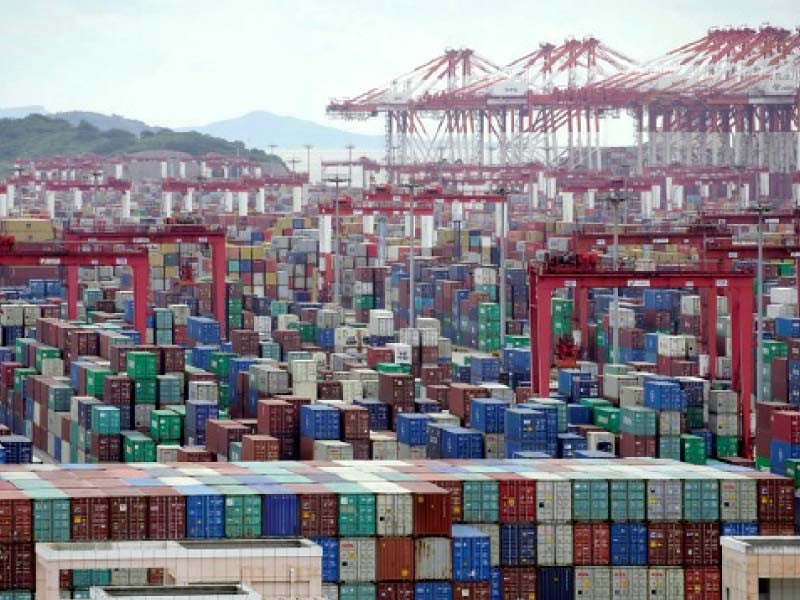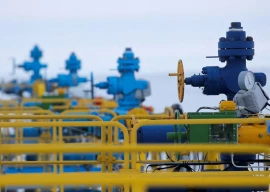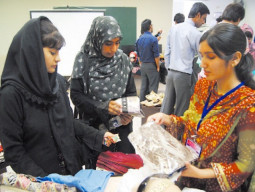
The 10-year GSP (Generalised System of Preferences) Plus scheme of the European Union, under which Pakistani exporters get duty-free access for textiles, clothing and leather items, is expiring on December 31, 2023. Thereafter, a new slightly modified 10-year scheme will apply.
Since seeking unilateral tariff concessions from developed countries has been a cornerstone of our trade policy, our government and the relevant business associations are doing their utmost to ensure that Pakistan remains a beneficiary of the new scheme over the next 10 years. Indeed, in the absence of any better duty-free market access alternative, the government seems to have no choice but to make every effort to be part of the new GSP Plus scheme.
Since Pakistan meets the economic criteria and has already ratified all the UN conventions covered under the existing and revised GSP Plus, getting accepted into the new GSP Plus should not be difficult.
However, if the EU insists on additional conditions such as abolishing or restricting the death penalty to some crimes and giving more space to civil society, this may create problems with some domestic constituencies.
Except Pakistan and the Philippines, other beneficiaries of the GSP Plus scheme are small economies with very low exports, such as Armenia, Bolivia, Cape Verde, Kyrgyzstan, Mongolia, Paraguay and Uzbekistan. Since the Philippines is now negotiating a free trade agreement (FTA) with the EU, it may leave the GSP Plus scheme once the negotiations are completed. Even while being a beneficiary of the scheme, unlike Pakistan, it continued its regional and global integration.
Recently, it joined the world’s biggest trade bloc, the Regional Comprehensive Economic Partnership, which includes 14 Asia-Pacific countries.
Pakistan has availed uninterrupted use of GSP Plus for the past eight years. Previously also, the EU allowed zero duty access under various short-term schemes such as the GSP drug regime 2002-2004 and floods rehabilitation for 2012-13.
It would be worthwhile to examine whether such unilateral tariff concessions have been in Pakistan’s best interest. It is a fact that since the award of GSP Plus, Pakistan’s exports to the EU have increased from 3.56 billion euros in 2013 to 6.64 billion euros in 2021, or about 86%. However, a similar growth (66%) was also seen in exports to the US where Pakistan has no duty-free access.
But the growth of exports in these two markets and for a limited category of goods, did not result in any increase for Pakistan’s global exports, which were about $25 billion in 2013 and were of the same value in 2021. As a percentage of GDP, Pakistan’s exports have seen a considerable fall during this period. Similarly, Pakistan’s share of global trade has shrunk.
In contrast, many other developing countries that integrated regionally and globally (rather than seeking GSP Plus-type facility) have significantly increased their exports and global trade share. For example, the exports of Vietnam, which now has FTAs with 56 economies, and which had the same level of exports as Pakistan in 1995 at about $5 billion, jumped to $336 billion in 2021.
In terms of its latest FTA, signed on June 30, 2019, the EU has agreed to eliminate 99% of all tariffs for Vietnamese goods against the 66% tariff lines we get under GSP Plus.
Since the EU-Vietnam FTA is a bilateral agreement and not a unilateral concession, Vietnam will not have to undergo any EU monitoring of its domestic policies as Pakistan will have to do to stay in the scheme.
Pakistan has to realise that its current trade policies of only looking for preferential access through GSP-type schemes are not working.
Due to its single-track focus on such schemes, Pakistan gives all government subsidies (estimated at $800 million) to only a selected few sectors that can benefit from the GSP Plus scheme. It’s a similar approach to what influential industrialists enjoy in the domestic market through industry-specific SROs.
Focusing on only a few products, we do not level the playing field for other potential exports. Moreover, in the process we ignore the fastest growing regions such as East Asia, where no such schemes are available.
Compared to the GSP Plus, we did not put in even a fraction of effort to join the Regional Comprehensive Economic Partnership (RCEP) agreement, which in many ways is Asia’s equivalent to the European Union or North American trading bloc. To grow its exports and thrive, Pakistan has to broaden its vision, as many prosperous countries have done. Its overall exports cannot increase if it remains trapped in past policies.
Continued heavy reliance on EU and US markets and a few products is risky. If Pakistan does not look beyond the GSP Plus, 10 years later, it may find itself in the position it is now – a low-income, vulnerable country dependent on the largesse of the EU.
The writer has served as Pakistan’s ambassador to WTO and as FAO’s representative to the United Nations at Geneva
Published in The Express Tribune, September 19th, 2022.
Like Business on Facebook, follow @TribuneBiz on Twitter to stay informed and join in the conversation.


















COMMENTS (2)
Comments are moderated and generally will be posted if they are on-topic and not abusive.
For more information, please see our Comments FAQ